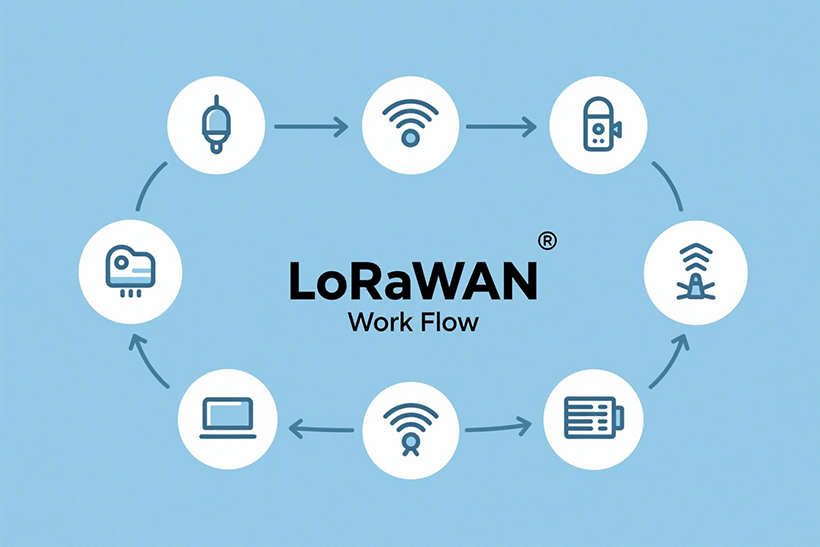Making Wireless IoT Project Easy, Smart, Secure.
GET A FREE SAMPLEIn the construction of smart cities, a large number of IoT devices require stable, low-power and long-distance communication technologies. Wi-Fi and 5G are fast but have limited coverage and high power consumption; while traditional cellular networks (such as 4G) are costly and not suitable for large-scale sensor deployment.
LoRaWAN (Long Range Wide Area Network) leverages its advantages of low power consumption, wide coverage and low cost to become a key supporting technology for smart cities. From intelligent street lamps to trash can monitoring, from environmental perception to traffic management, LoRaWAN is quietly transforming the operation mode of cities.

Building a smart city requires connecting a vast number of devices across a wide geographic area, many of which operate in locations where power and internet connectivity are limited.
Extremely long communication range:Single gateway coverage can reach 5 to 15 kilometers (in urban areas), and even farther in rural or suburban areas. Compared with Wi-Fi (within 100 meters), Zigbee (several tens of meters), and LoRaWAN, it significantly reduces the cost of base station deployment.
Ultra-low power consumption devices have a long operating time:By using intermittent data transmission, the battery life of terminal devices (such as sensors) can reach 5 to 10 years, and it is suitable for scenarios where battery replacement is difficult, such as underground water pipe monitoring and high-altitude weather stations.
Extensive scale of device connections:A single LoRaWAN gateway can connect thousands of terminal devices, meeting the large-scale demands of smart cities.
Safe and reliable:Supports AES-128 end-to-end encryption to prevent data tampering or eavesdropping, suitable for sensitive data in smart cities
Smart street lamps can adjust their lighting according to demand, saving over 30% of energy. They automatically adjust the brightness using light and motion sensors, reducing power consumption and energy consumption when no one is around. Smart trash cans optimize the garbage collection routes, using ultrasonic sensor technology to monitor the fill level of the trash cans. When they are full, they automatically report, optimizing the collection routes and reducing the empty running of garbage trucks, thereby lowering fuel consumption by 20%. In terms of environmental monitoring, it can manage air quality and noise in real time. Sensors such as PM2.5, temperature and humidity, and noise sensors are distributed throughout the city, and data is uploaded to the cloud in real time. Smart parking uses magnetic sensors to detect the occupancy of parking spaces, guiding drivers to park quickly, reducing traffic congestion by 30%. Water and power grid monitoring uses smart water meters and pressure sensors to monitor pipeline leaks in real time, reducing water resource loss and lowering resource waste. This is of great help to the construction of smart cities.
From intelligent streetlights to smart sanitation, from environmental monitoring to intelligent parking, LoRaWAN is becoming the "invisible backbone network" of smart cities. Its characteristics of low cost, low power consumption, and wide coverage make it the preferred technology for urban Internet of Things. In the future, with the integration of 5G, expansion of satellites, and optimization by AI, LoRaWAN will play a more crucial role in the construction of smart cities.
Smart cities are not a future concept; they are something that exists right now. And the development of LoRaWAN is the most significant driving force behind this.
Prev:Intelligent Elderly Care System Upgraded:VDB03 Bluetooth
Next:The Application of GPS in Drones: Positioning and Intelligent Flight
Copyrights© Shenzhen Skylab Co.,LTD All Rights Reserved.

